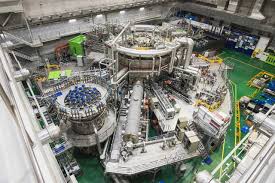
Breaking News
 Interview 1991 - The Origins of the Philosophy of Liberty with Ken Schoolland
Interview 1991 - The Origins of the Philosophy of Liberty with Ken Schoolland
 Silversqueeze: How We Got Here, Where We're Going
Silversqueeze: How We Got Here, Where We're Going
 I asked Grok for Its Opinion on "Grok vs ChatGPT, Which Is Better?"
I asked Grok for Its Opinion on "Grok vs ChatGPT, Which Is Better?"
 You'll own NOTHING and be happy?
You'll own NOTHING and be happy?
Top Tech News
 Build a Greenhouse HEATER that Lasts 10-15 DAYS!
Build a Greenhouse HEATER that Lasts 10-15 DAYS!
 Look at the genius idea he came up with using this tank that nobody wanted
Look at the genius idea he came up with using this tank that nobody wanted
 Latest Comet 3I Atlas Anomolies Like the Impossible 600,000 Mile Long Sunward Tail
Latest Comet 3I Atlas Anomolies Like the Impossible 600,000 Mile Long Sunward Tail
 Tesla Just Opened Its Biggest Supercharger Station Ever--And It's Powered By Solar And Batteries
Tesla Just Opened Its Biggest Supercharger Station Ever--And It's Powered By Solar And Batteries
 Your body already knows how to regrow limbs. We just haven't figured out how to turn it on yet.
Your body already knows how to regrow limbs. We just haven't figured out how to turn it on yet.
 We've wiretapped the gut-brain hotline to decode signals driving disease
We've wiretapped the gut-brain hotline to decode signals driving disease
 3D-printable concrete alternative hardens in three days, not four weeks
3D-printable concrete alternative hardens in three days, not four weeks
 Could satellite-beaming planes and airships make SpaceX's Starlink obsolete?
Could satellite-beaming planes and airships make SpaceX's Starlink obsolete?
KSTAR fusion device maintains 100 million degrees for record 20 seconds

However, progress continues to be made on the various approaches to practical nuclear fusion being pursued, of which tokamak reactors remain a frontrunner. In another promising development for the technology, the Korea Superconducting Tokamak Advanced Research (KSTAR) fusion device has set a world record by maintaining plasma at over 100 million °C (180 million °F) for 20 seconds.
Completed in 2007 and achieving first plasma in 2008, in 2016 KSTAR set a world record for the longest operation in high-confinement mode by successfully maintaining a high-temperature hydrogen plasma at about 50 million °C (90 million °F) for 70 seconds. China subsequently claimed a new record in 2017 with its Experimental Advanced Superconducting Tokamak (EAST), managing to maintain plasma at a similar temperature for 102 seconds.

 First totally synthetic human brain model has been realized
First totally synthetic human brain model has been realized Mach-23 potato gun to shoot satellites into space
Mach-23 potato gun to shoot satellites into space

